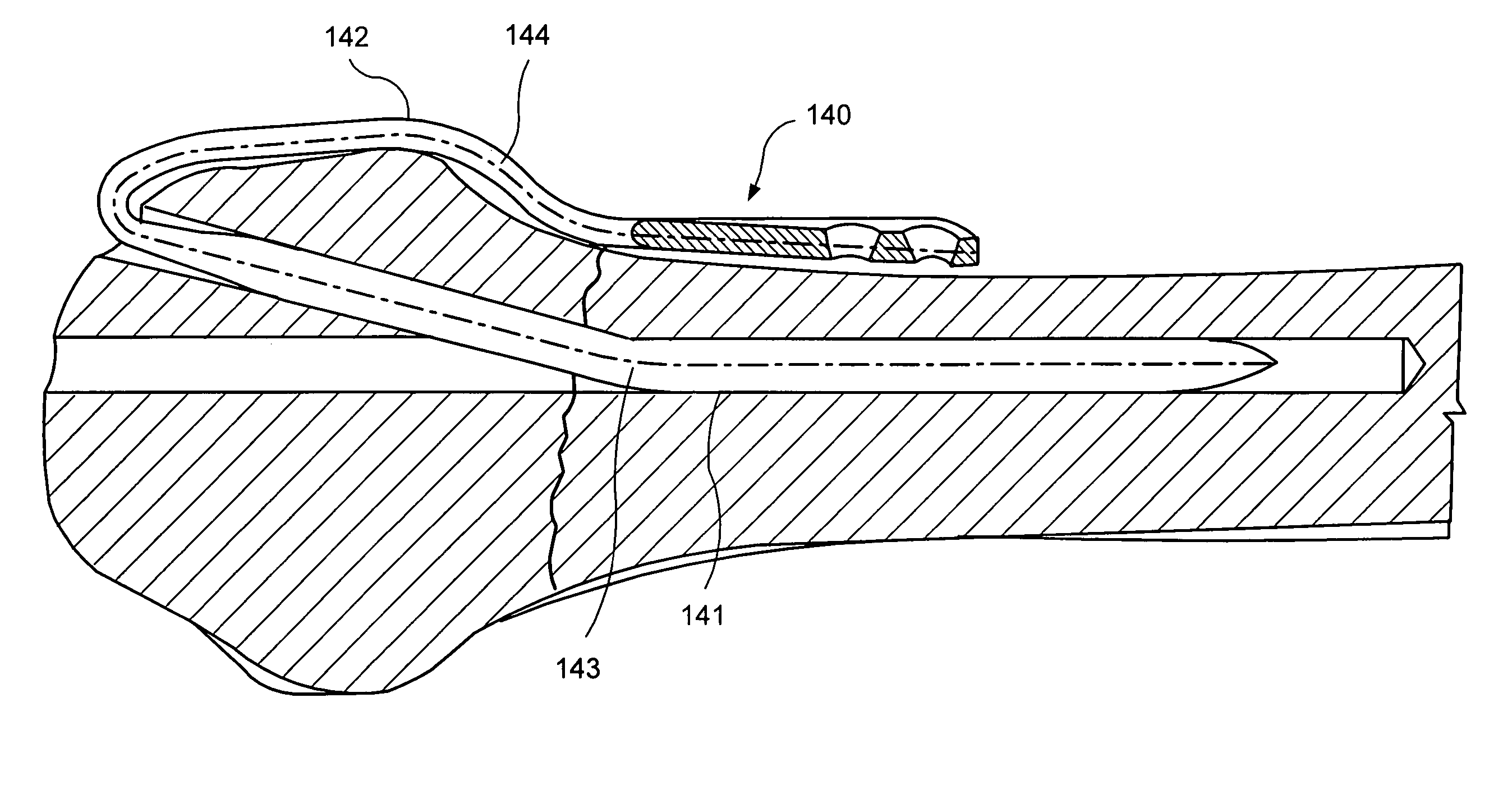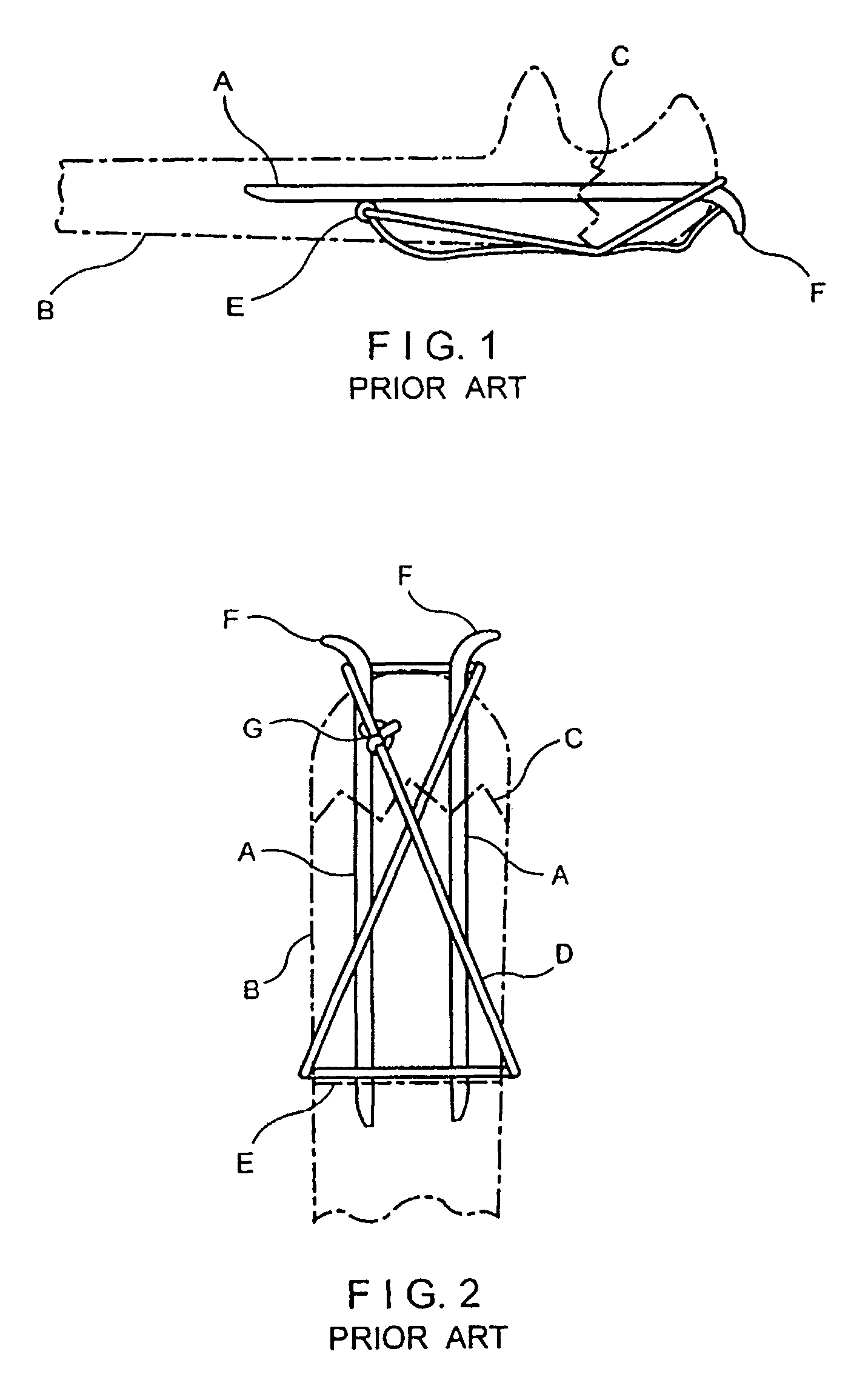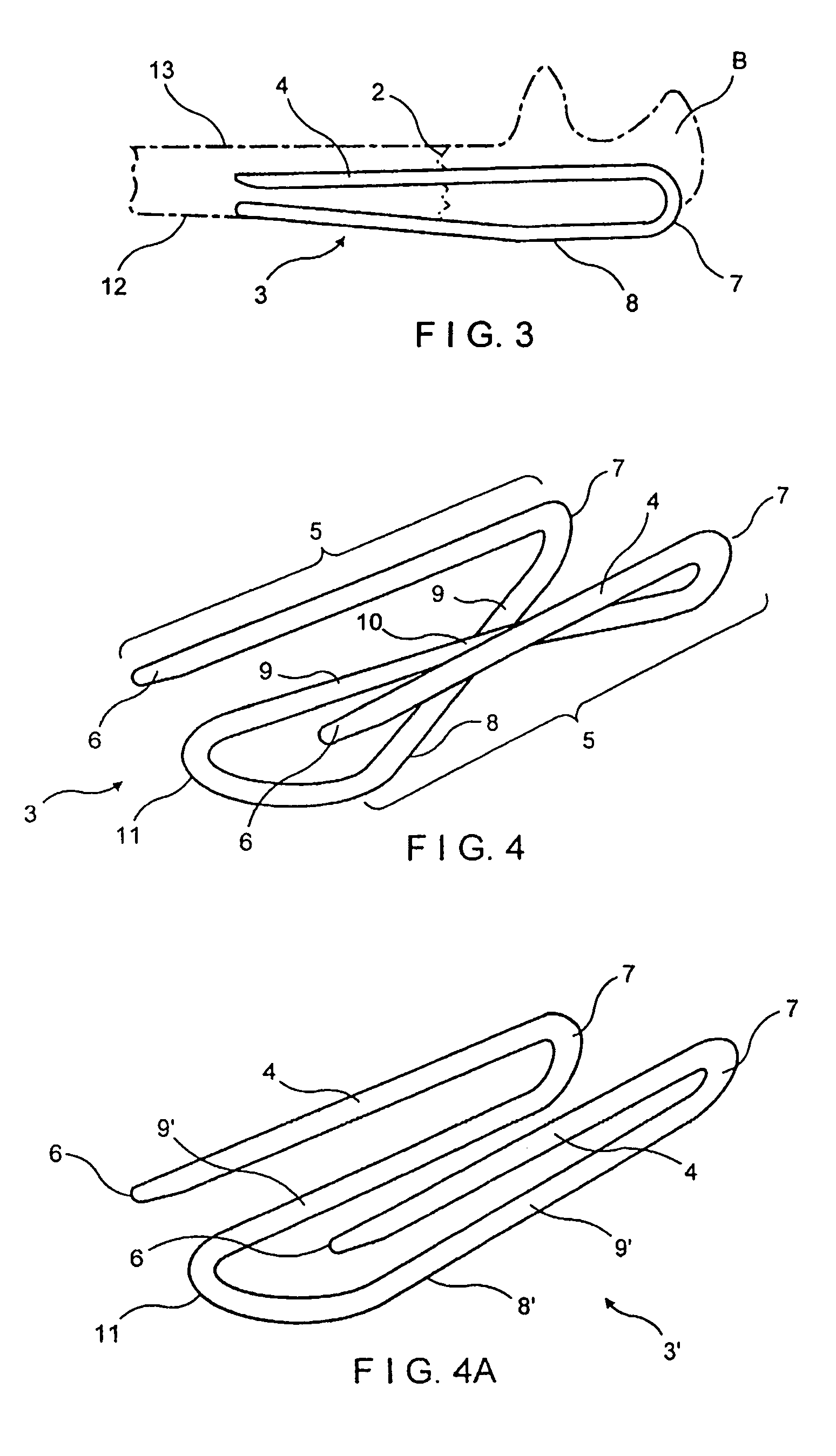Implant device for applying compression across a fracture site
a technology for fractures and implants, applied in the direction of osteosynthesis devices, prostheses, surgical staples, etc., can solve the problems of cumbersome passage of wire through drill holes d, through tendon and under pins, and irritation of soft tissues
- Summary
- Abstract
- Description
- Claims
- Application Information
AI Technical Summary
Benefits of technology
Problems solved by technology
Method used
Image
Examples
Embodiment Construction
[0074]The drawings illustrate a fracture fixation implant device 1 for applying compression across a fracture 2 in a bone B. The bone B, for example, may be the olecranon or the patella that involve an articular surface.
[0075]The implant device 1 comprises a continuous wire element 3 formed with two spaced longitudinally extending legs 4 which are adapted to be driven into the bone B across the fracture 2. The term “wire” or “wire element” is an art recognized term and covers elements having circular or rectangular cross-sections and commonly referred to as pins, wires or bars. The legs 4 form a first portion 5 of the wire element and the legs 4 extend at their ends remote from free ends 6 thereof to bend portions 7 extending outside the bone. Integrally connected to bend portions 7 is a second portion 8 extending backwardly from the bend portions 7 in juxtaposition with the legs 4 of the first portion 5. The second portion 8 includes legs 9 continuous with respective bend portions ...
PUM
 Login to View More
Login to View More Abstract
Description
Claims
Application Information
 Login to View More
Login to View More - R&D
- Intellectual Property
- Life Sciences
- Materials
- Tech Scout
- Unparalleled Data Quality
- Higher Quality Content
- 60% Fewer Hallucinations
Browse by: Latest US Patents, China's latest patents, Technical Efficacy Thesaurus, Application Domain, Technology Topic, Popular Technical Reports.
© 2025 PatSnap. All rights reserved.Legal|Privacy policy|Modern Slavery Act Transparency Statement|Sitemap|About US| Contact US: help@patsnap.com



